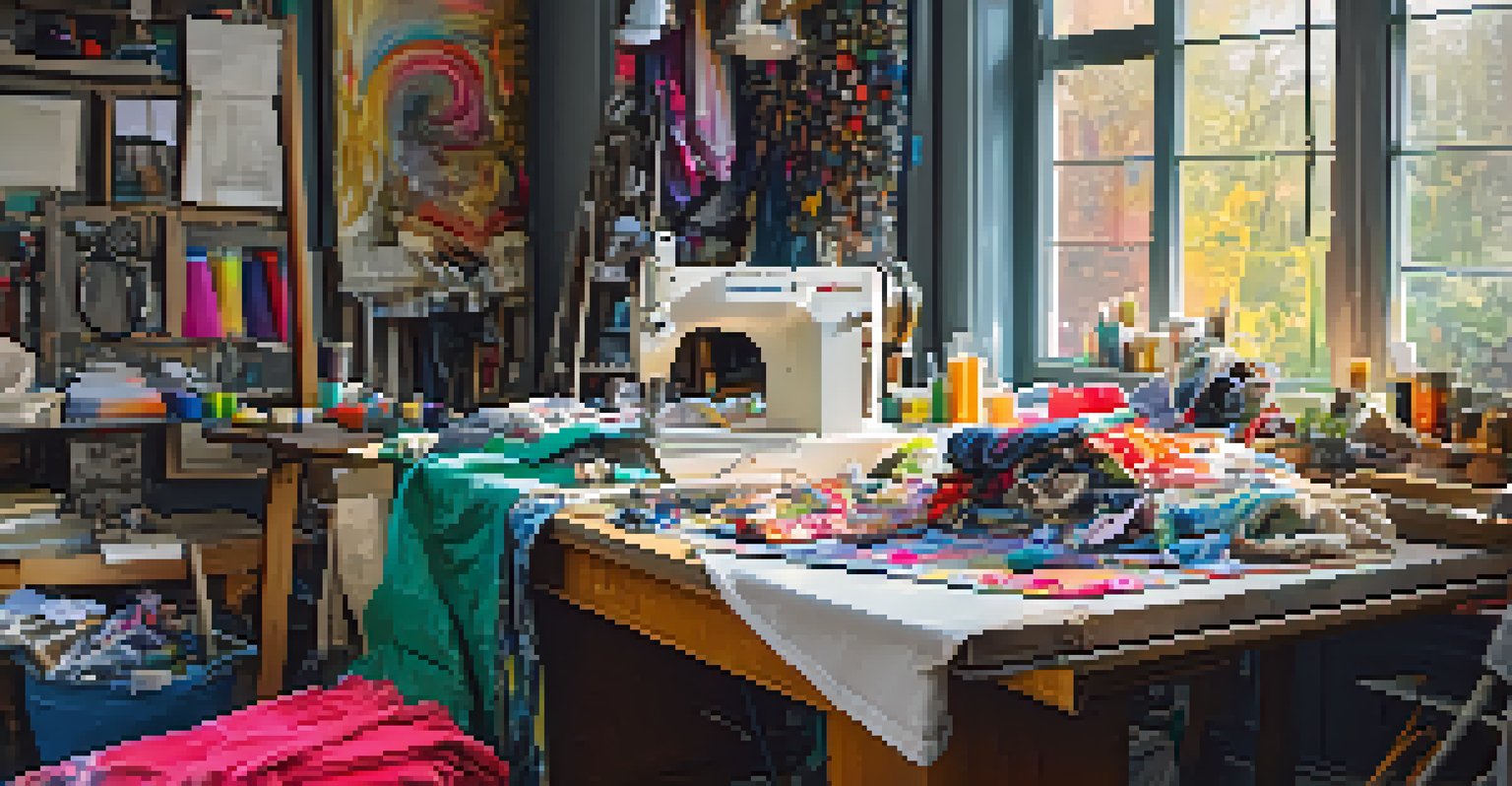Sustainable Fashion: Reducing Waste in the Clothing Industry

Understanding Sustainable Fashion and Its Importance
Sustainable fashion refers to clothing that is designed, manufactured, and consumed in ways that are environmentally friendly and ethically responsible. This approach is crucial as the fashion industry is one of the largest polluters globally, contributing significantly to waste and carbon emissions. By embracing sustainable practices, we can reduce this impact and promote a healthier planet.
Fashion is about dreaming and making other people dream. But how can you dream in a world that is burning? We need to make sustainability the new normal in fashion.
The importance of sustainable fashion extends beyond just environmental concerns; it also addresses social issues. Many garment workers face poor conditions and unfair wages, so adopting sustainable practices can lead to fairer labor practices and improved livelihoods. Ultimately, sustainable fashion is not just about style; it's about making a positive impact on the world.
As consumers become more aware of these issues, the demand for sustainable fashion is rising. This shift encourages brands to rethink their production processes and prioritize sustainability. By supporting these efforts, we can foster a more responsible fashion industry that respects both people and the planet.
The Problem of Waste in the Clothing Industry
The clothing industry generates enormous amounts of waste, with millions of tons ending up in landfills each year. Often, garments are discarded after only a few uses, a phenomenon fueled by fast fashion trends. This overconsumption not only clutters our landfills but also contributes to significant environmental degradation.

Fast fashion brands produce cheap, trendy items that encourage consumers to buy more than they need. This cycle leads to a throwaway culture, where clothes are seen as disposable rather than valuable items. The environmental toll of this waste is staggering, as it involves not only the waste itself but also the resources used in production.
Sustainable Fashion Benefits the Planet
Sustainable fashion reduces environmental impact and promotes ethical labor practices in the clothing industry.
To combat these issues, it's essential to raise awareness about the true cost of fast fashion. By understanding the environmental and social implications of our clothing choices, we can start making more informed decisions that support sustainable practices. Reducing waste starts with recognizing the problem and actively seeking solutions.
Eco-Friendly Materials: A Step Towards Sustainability
One of the most effective ways to reduce waste in the clothing industry is by using eco-friendly materials. Fabrics like organic cotton, hemp, and Tencel are produced with less water and fewer chemicals, making them more sustainable options. These materials not only minimize environmental impact but also offer quality and durability, leading to longer-lasting garments.
The greatest threat to our planet is the belief that someone else will save it.
Recycled materials are another innovative solution gaining traction in the fashion world. Brands are increasingly turning discarded plastic bottles and textiles into new fabrics, reducing the need for virgin materials. This not only cuts down on waste but also helps to close the loop in the clothing production cycle.
By choosing clothing made from eco-friendly materials, consumers can play a crucial role in supporting sustainable fashion. Each purchase has the potential to drive change, encouraging brands to prioritize sustainability in their production processes. It's a small but impactful step towards a more responsible wardrobe.
The Role of Upcycling in Sustainable Fashion
Upcycling is a creative way to give new life to old clothing and materials, transforming them into something fresh and desirable. This practice not only reduces waste but also encourages a more thoughtful approach to fashion. Instead of discarding items, upcycling promotes the idea that we can repurpose what we already own.
Many designers and brands are embracing upcycling as a sustainable practice. By taking discarded garments and reimagining them, they create unique pieces that tell a story. This not only minimizes waste but also fosters individuality and creativity in fashion.
Waste Issues Demand Conscious Choices
The fast fashion industry contributes to significant waste, highlighting the need for consumers to make informed clothing decisions.
As consumers, we can also participate in the upcycling movement by getting creative with our own wardrobes. Simple alterations, DIY projects, or even swapping clothes with friends can breathe new life into old items. Upcycling is not just a trend; it's a mindset that supports sustainability and reduces waste.
The Impact of Second-Hand Shopping
Second-hand shopping is gaining popularity as a sustainable alternative to buying new clothes. Thrift stores, consignment shops, and online marketplaces offer a treasure trove of pre-loved garments, allowing consumers to find unique pieces while reducing waste. This practice not only extends the life of clothing but also minimizes the demand for new production.
By choosing second-hand items, shoppers can contribute to a circular economy where clothing is reused and recycled rather than thrown away. This shift not only benefits the environment but also supports local businesses and encourages community engagement. Plus, it can be an exciting adventure to hunt for hidden gems!
Understanding the value of second-hand shopping can help shift perceptions about used clothing. Instead of viewing it as inferior, we should embrace it as a sustainable choice that promotes creativity and individual style. Every second-hand purchase is a step toward reducing waste in the clothing industry.
Educating Consumers on Sustainable Choices
Education plays a pivotal role in promoting sustainable fashion. By informing consumers about the impacts of their clothing choices, we can foster a culture of conscious consumption. Awareness campaigns, workshops, and social media initiatives can help spread the message of sustainability and its importance in the fashion industry.
Many brands are now sharing information about their sustainable practices and the materials they use. Transparency is vital, as it allows consumers to make informed decisions and support brands that align with their values. The more we know about the products we buy, the more empowered we become to choose sustainably.
Second-Hand Shopping Supports Sustainability
Buying second-hand clothing helps extend the life of garments and reduces the demand for new production.
As consumers, we can also educate ourselves by researching and asking questions about the brands we support. Simple actions, like reading labels or seeking out certifications, can lead to more sustainable choices. Knowledge is a powerful tool in the fight against waste in the clothing industry.
Supporting Brands Committed to Sustainability
Supporting brands that prioritize sustainable practices is essential for driving change in the fashion industry. Many companies are now dedicated to reducing their environmental impact by using eco-friendly materials, ethical labor practices, and sustainable production methods. By choosing to shop with these brands, consumers can encourage a shift towards more responsible fashion.
It's also important to recognize that sustainability is not a one-size-fits-all approach. Different brands may focus on various aspects of sustainability, whether it be reducing carbon footprints, promoting fair labor, or using recycled materials. Understanding these nuances can help us make more informed choices when supporting sustainable fashion.

As consumers, we hold significant power in influencing the market. The more we demand sustainable options, the more brands will respond to that demand. Supporting sustainable brands is not just about making purchases; it's about advocating for a future where fashion is both stylish and responsible.